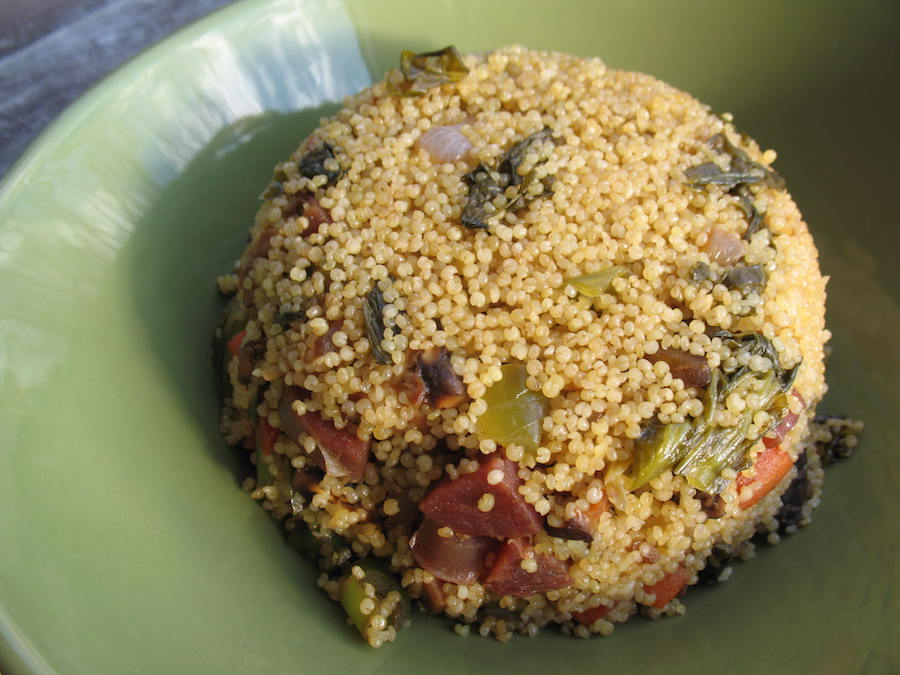
The millets of China, Mongolia, and Central Asia are hearty crops that can be sustained in very arid climates. For tens of thousands of years they have served as important staple crops for many of those region’s food cultures (especially before the widespread use of wheat). Today I am writing about two of the most common types of millet that have ancient Eurasian roots, but can be easily found in Philadelphia Chinese markets: foxtail millet (Setaricia italica) and broomcorn millet (Panicum miliaceum). Both are nutty, delicious, and nutritious, and both are definitely worth checking out as a an interesting alternative to other grains.
If you don’t know what to expect with attempting to cook these millets, I find their tastes and textures remind me very much of a starchy couscous (in fact, in Chinese, couscous is often called by the same word used to refer to foxtail millet 小米, despite the fact that couscous is not a grain but a type of pasta). In porridge forms, the taste and texture is reminiscent of Cream of Wheat (for me this isn’t a negative connotation). The millet grains that I describe below are smaller than rice, and they cook faster than rice too. These would be versatile in pilaf or porridge preparations, savory or sweet. Both have “glutinous” (I presume those would be best in porridge-type preparations) and “regular” forms in Philadelphia markets. I’ll be focusing on the non-glutinous types today.
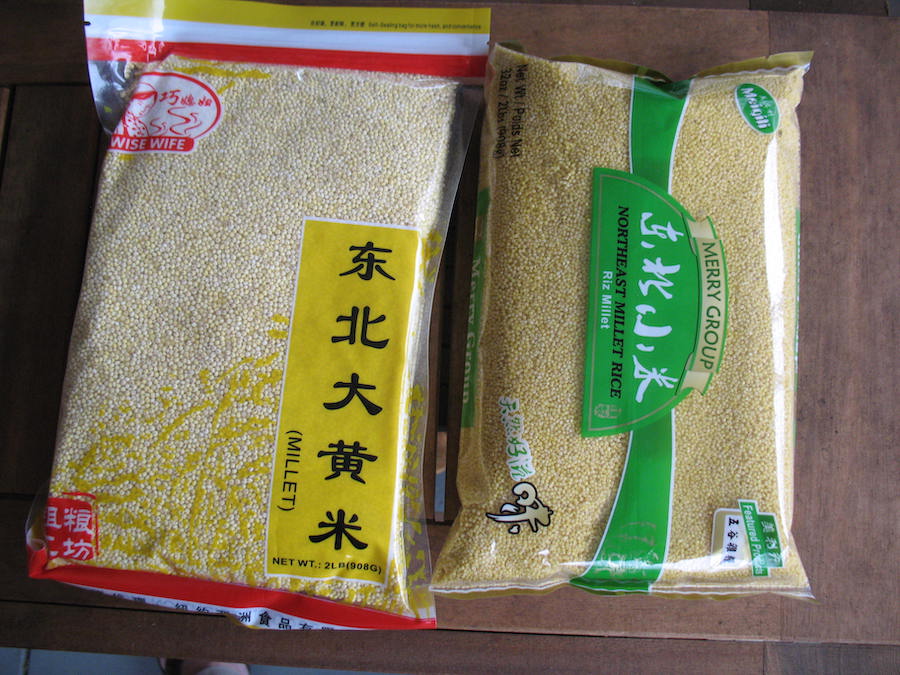
I took several weeks to research as many millet-focused recipes as I could find from my Chinese, Mongolian, Uyghur, Uzbek, and Kazakh language cookbook collection, and some existing resources online. Most recipes that I found were for porridge preparations, like a sweet snack or hot breakfast recipe. There were also several pilaf-like preparations that intrigued me. As I’ve been home-bound for several weeks now due to the COVID-19 related lockdown in Philadelphia, I decided to try several millet-based dishes, and I share some of my millet adventures below.

Foxtail millet was domesticated in north-central China some 10,000 years ago1 (in the same region that is the Chinese wheat heartland of breads and noodles along the Yellow River) and is still an important crop there. The grain is also now common in Central Asian and Mongolian food cultures. In Chinese this is commonly referred to as “little grain” 小米, as opposed to the “big grain” 大米 (which is a common way to refer to rice). It is also sometimes referred to as 粟米 or 谷[子]米.
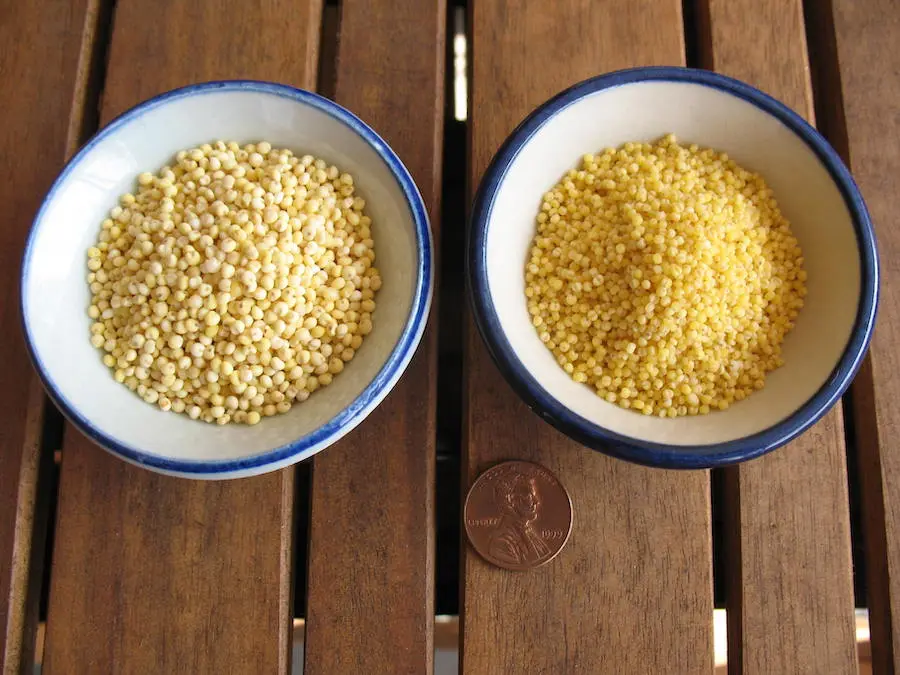
According to my dictionaries, Central Asian Turkic languages near China refer to foxtail millet as: қонақ/قوناق (Kazakh) qo’noq/қўнақ (Uzbek), конок (Kyrgyz), and چۈچگۈن قوناق (Uyghur). It is interesting that the unclassified cognate qonaq in Uyghur refers to corn/maize instead of millet, but in all other languages it seems to point specifically to millet.
In Mongolian this grain is commonly referred to as “yellow grain” шар будаа ᠰᠢᠷᠠ ᠪᠤᠳᠠᠭᠠ, or “day grain” хоног будаа ᠬᠣᠨᠤᠭ ᠪᠤᠳᠠᠭᠠ. Is it possible that the Mongolian khonog might be a cognate to Turkic qonaq?

Milk tea with dumplings (and millet and rice) 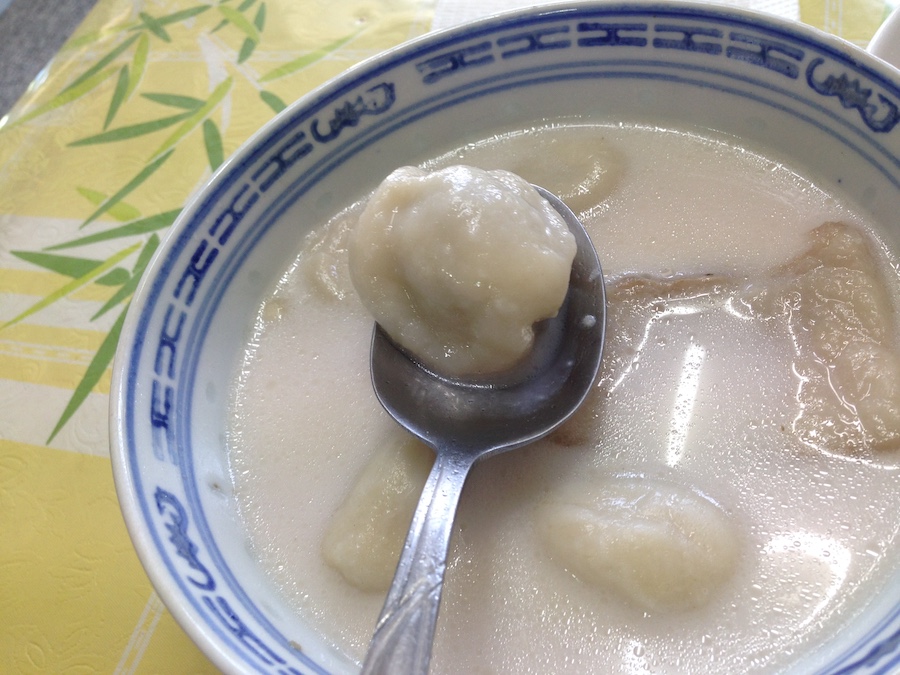
There’s a nice piece of tail fat floating there too. It was a delicious bowl

Broomcorn millet was likely domesticated in Central Asia2, again in ancient times, but it has long been used in Chinese and Mongolian food cultures as well. This is known commonly called “yellow grain” 黄米 in Chinese. It is a little fatter than foxtail millet, and it is a little starchier. It works as a starchy grain stand-in as part of a broader meal, but it is likely best suited as a porridge grain.
In Mongolian, this is called “black grain” хар будаа ᠬᠠᠷᠠ ᠪᠤᠳᠠᠭᠠ. In nearby Turkic languages it is known as тары/تارى (Kazakh), tariq/тариқ (Uzbek), таруу (Kyrgyz), and تېرىق (Uyghur).

In my search for recipes in various modern Central Asian language cookbooks, it was evident that primarily China focused on the difference between these two grains. In almost all of my non-Chinese language cookbooks, the types of millet were not specified. Instead a generic term for millet (or perhaps the meaning is “groats”?) was generally used: сөқ/سوك (Kazakh), so’q/сўқ (Uzbek), سۆك (Uyghur).

Making a pilaf-style dish with millet
This can be done a few different ways. A “fried rice” approach (i.e. the image below) may be the easiest starting point. You can simply par-boil the grains to your desired consistency (just before al-dente would be good). Then you can drain, cool, and set aside until you are ready to stir fry with the other ingredients. Or you can put in the hot drained grains right into the stir fry preparation. The grains would go in last, just to season and finish. If your grains are fully cooked, an overnight rest in the fridge would make them perfect for a fried “rice” (just like day-old rice is always better for fried rice).

Alternatively, you could start by frying all of the other pilaf ingredients, and then dumping in pre-soaked (30 mins) and drained millet before frying it together. You would then need to add some boiling water as you cook all of the ingredients together, just enough to bring the grains to boil/steam to fully cooked. It might take 10-15 minutes or so. I did that process below with a recipe very loosely based on a Shaanxi dish I saw for “Millet fried sheep parts” 谷米炒羊杂. Instead of sheep organ meat, I used a sweet and savory Chinese sausage.
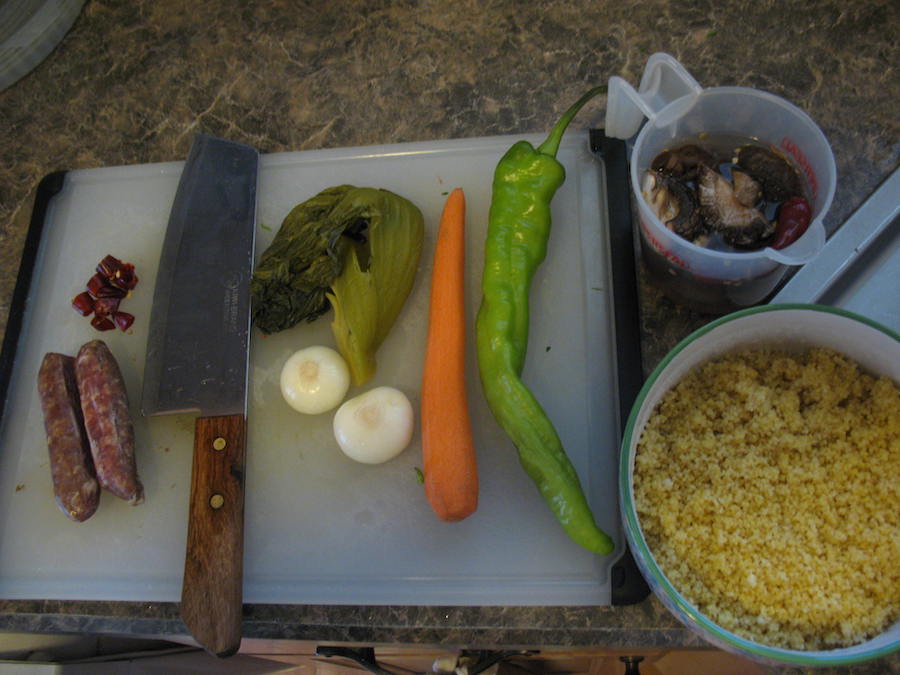
Pantry and leftover odds and ends from the fridge from L to R: soaked dried chiles, sweet chinese sausages, pickled mustard greens, onions, carrot, large chile, shitake mushrooms (soaking) and soaked foxtail millet 
All those things diced and ready to fry. Fry these first, and then fry with millet. Add enough water just to make the grains cook through. Season with salt or soy sauce. I like a splash of vinegar too. I think vinegar goes very well with millet 
Once the millet is cooked, pack it into a bowl and release it into another plate or bowl if you want to be fancy 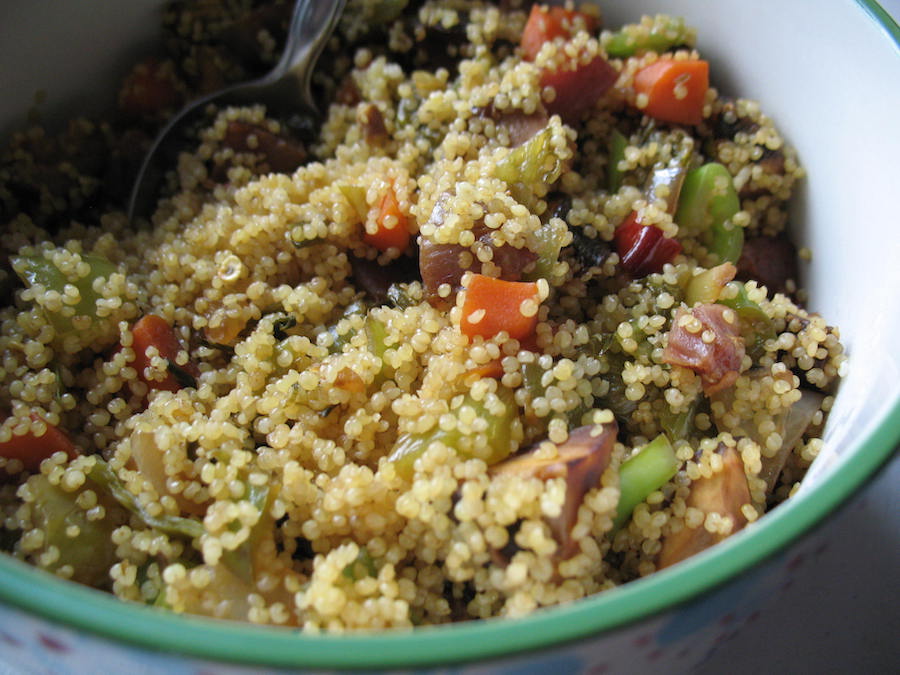
Flavors mingled well for a next-day breakfast of champions
A Uyghur-style millet “rice” with lamb stir fry سۆك ئېشى
Millet can also be prepared as a separate starch to eat together with stir fried things. I found one such recipe in the Rice cookbook of the “Uyghur food and drink culture” series (2007 by Yunus Hemdulla ئۇيغۇر يېمەك – ئىچمەك مەدەنىيىتى – گۈرۈچ تائاملىرى). The recipe is called “millet rice” soek eshi سۆك ئېشى 黄米饭 and it was delicious. I boiled pre-soaked (for 30 mins) broomcorn millet in just enough water to ensure it cooked through. I kept adding boiling water and kept stirring until water was absorbed and the grains were not too crunchy. I also added a little butter. Based on the image from the cookbook, I was actually going for this slightly sticky texture. I can’t say for certain if it is more commonly presented as independent grains. It was delicious in any case, and the near mashed potato consistency was a great pair to the lamb and pepper stir fry.
I should note that in the Uyghur cookbook, the millet was steamed in a bowl. That process may be easier to control the cooking time of the millet and better protect against burning on the bottom of the pan.
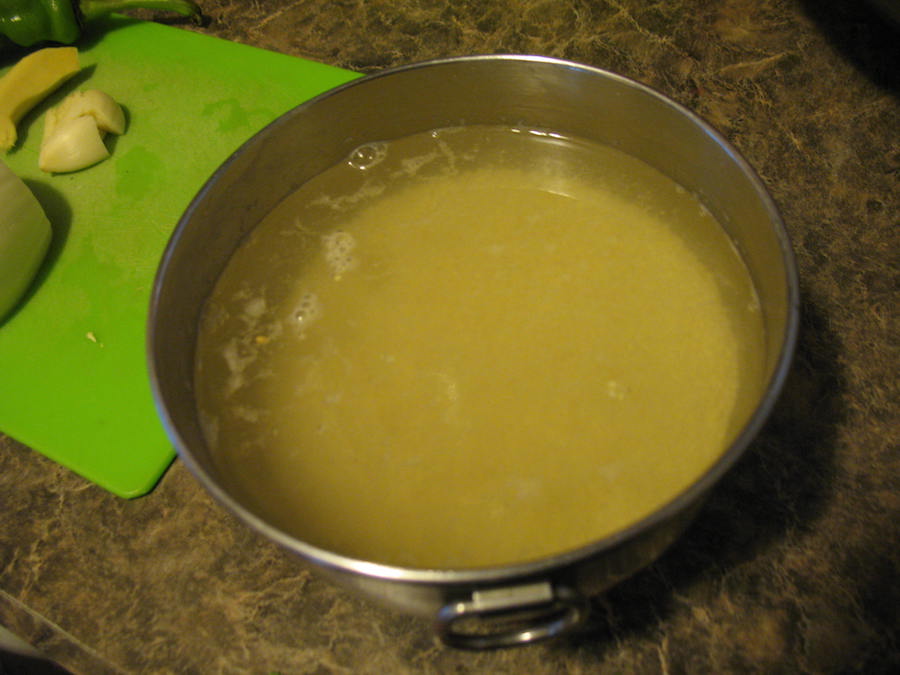
Soak millet for 30 mins or so. This time I used broomcorn millet 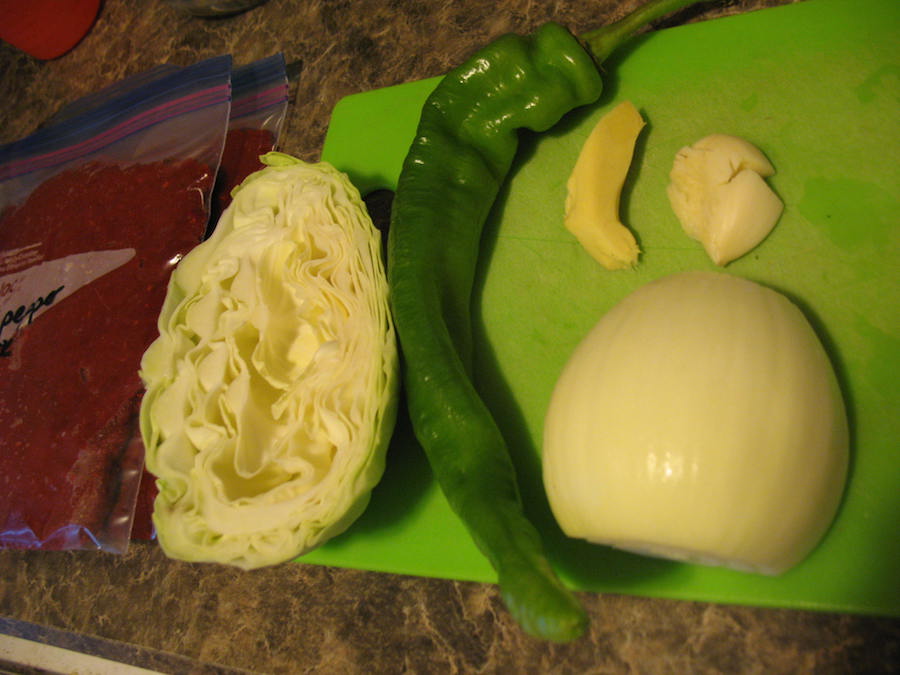
prep pantry/fridge items for stir fry. I used a generous spoon of Turkish red pepper paste (not in Uyghur recipe), some cabbage, a pepper, ginger, garlic, and onion 
…and farmer’s market lamb, all those things cut into similar sized rustic cuts/strips 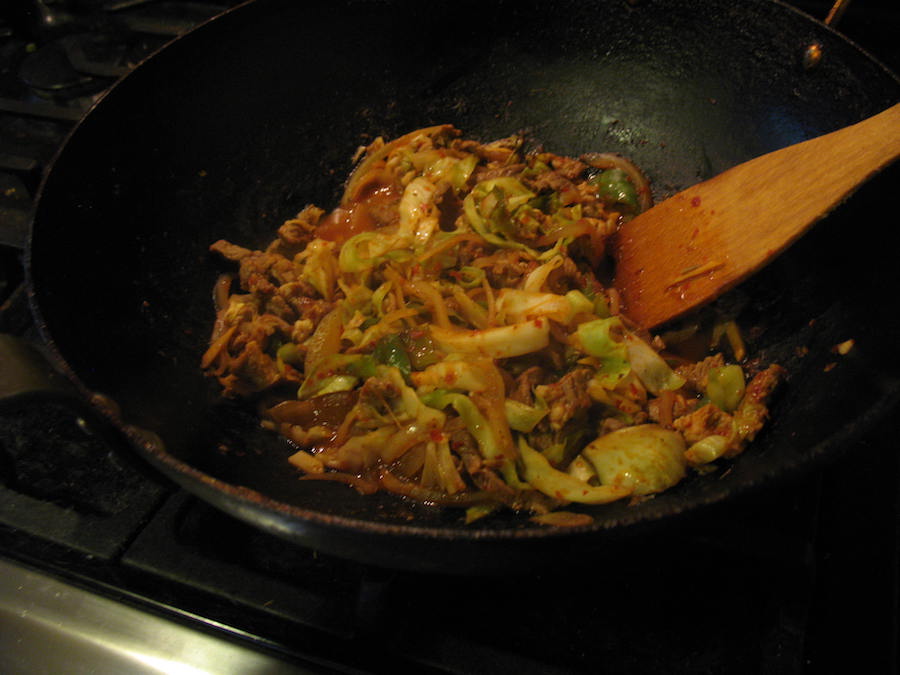
Fry in a wok, add salt, pepper, and a bit of water 
Fry until cooked. Taste for seasoning 
Lamb, chile, cabbage stir fry topped with some farmer’s market baby sorrel leaves 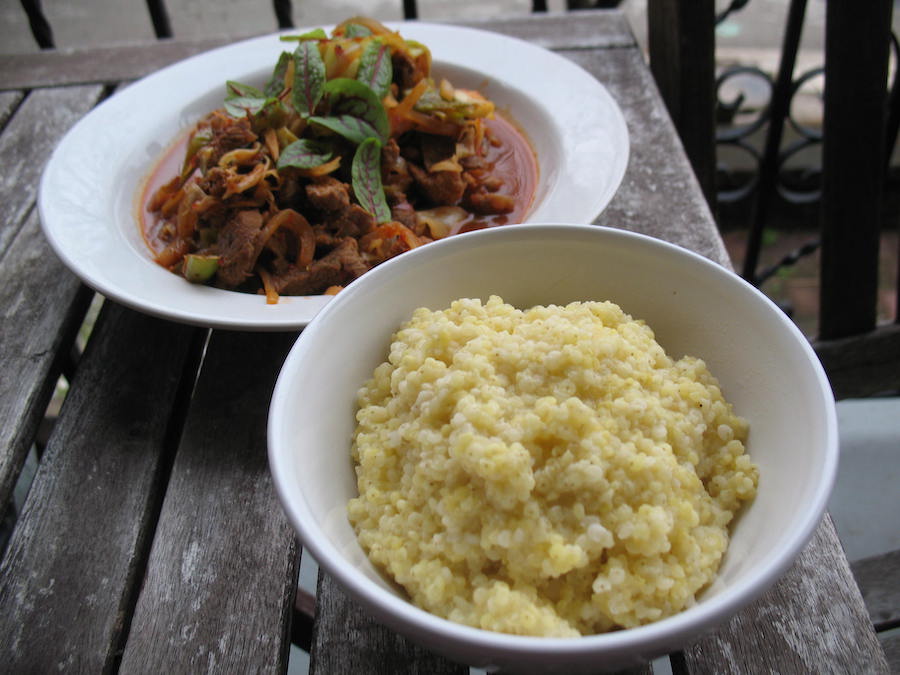
Finished broomcorn millet with lamb/chile stir fry
These are trying times as the world faces a pandemic. Stay strong everyone, and eat well when you can.
Citations
1,2E.N. Anderson, Food and Environment in Early and Medieval China. University of Pennsylvania Press, 2014. (pages referenced 36-37)
David you are amazing. Always fun to read your work
LikeLiked by 1 person
Thank you for this great overview over Millet and recipes. I am cooking with local ingredients in Switzerland, looking for recipes for millet, and found out that it was originally grown the first time in China (around the yellow river, as said in the fantastic book Homo Domesticus). So i looked for the source, for recipes, and found your nice website!
LikeLike
Thank you for reading and thanks for the kind words. Best wishes on cooking adventures in Switzerland!
LikeLike